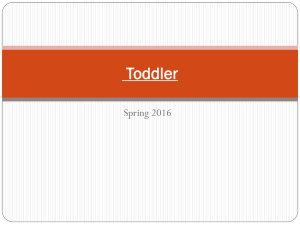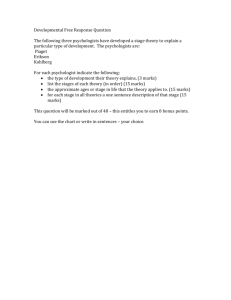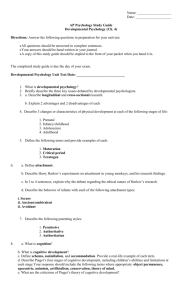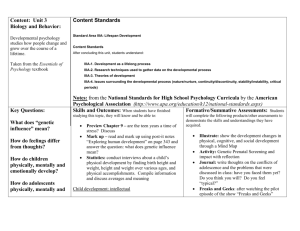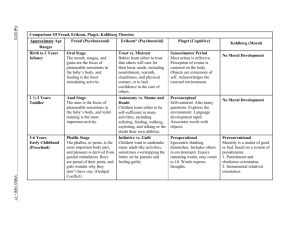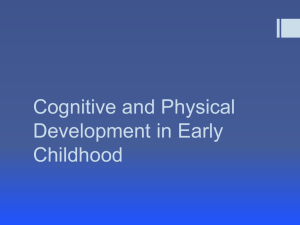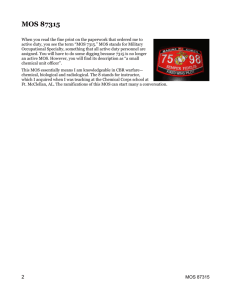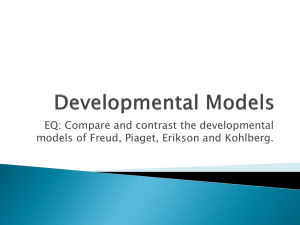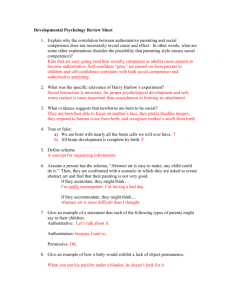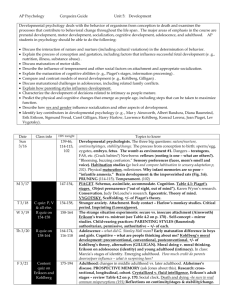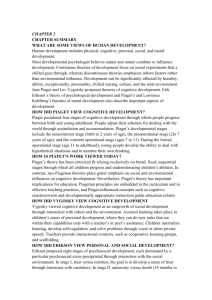Theories on Development
advertisement
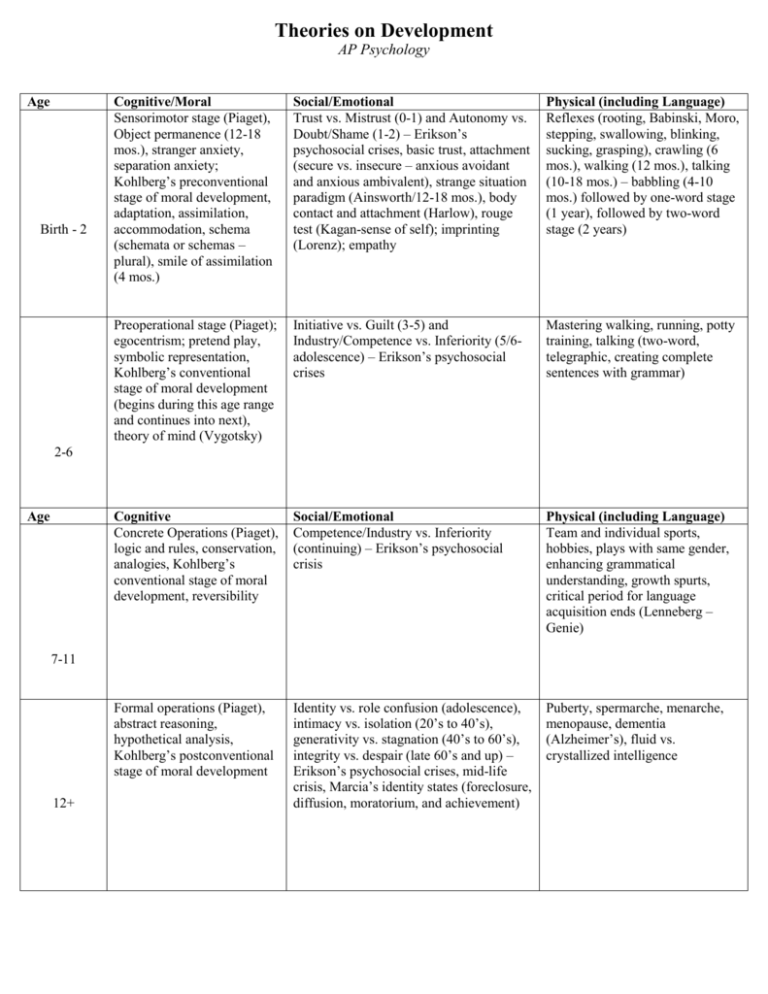
Theories on Development AP Psychology Age Birth - 2 Cognitive/Moral Sensorimotor stage (Piaget), Object permanence (12-18 mos.), stranger anxiety, separation anxiety; Kohlberg’s preconventional stage of moral development, adaptation, assimilation, accommodation, schema (schemata or schemas – plural), smile of assimilation (4 mos.) Social/Emotional Trust vs. Mistrust (0-1) and Autonomy vs. Doubt/Shame (1-2) – Erikson’s psychosocial crises, basic trust, attachment (secure vs. insecure – anxious avoidant and anxious ambivalent), strange situation paradigm (Ainsworth/12-18 mos.), body contact and attachment (Harlow), rouge test (Kagan-sense of self); imprinting (Lorenz); empathy Physical (including Language) Reflexes (rooting, Babinski, Moro, stepping, swallowing, blinking, sucking, grasping), crawling (6 mos.), walking (12 mos.), talking (10-18 mos.) – babbling (4-10 mos.) followed by one-word stage (1 year), followed by two-word stage (2 years) Preoperational stage (Piaget); egocentrism; pretend play, symbolic representation, Kohlberg’s conventional stage of moral development (begins during this age range and continues into next), theory of mind (Vygotsky) Initiative vs. Guilt (3-5) and Industry/Competence vs. Inferiority (5/6adolescence) – Erikson’s psychosocial crises Mastering walking, running, potty training, talking (two-word, telegraphic, creating complete sentences with grammar) Cognitive Concrete Operations (Piaget), logic and rules, conservation, analogies, Kohlberg’s conventional stage of moral development, reversibility Social/Emotional Competence/Industry vs. Inferiority (continuing) – Erikson’s psychosocial crisis Physical (including Language) Team and individual sports, hobbies, plays with same gender, enhancing grammatical understanding, growth spurts, critical period for language acquisition ends (Lenneberg – Genie) Formal operations (Piaget), abstract reasoning, hypothetical analysis, Kohlberg’s postconventional stage of moral development Identity vs. role confusion (adolescence), intimacy vs. isolation (20’s to 40’s), generativity vs. stagnation (40’s to 60’s), integrity vs. despair (late 60’s and up) – Erikson’s psychosocial crises, mid-life crisis, Marcia’s identity states (foreclosure, diffusion, moratorium, and achievement) Puberty, spermarche, menarche, menopause, dementia (Alzheimer’s), fluid vs. crystallized intelligence 2-6 Age 7-11 12+
